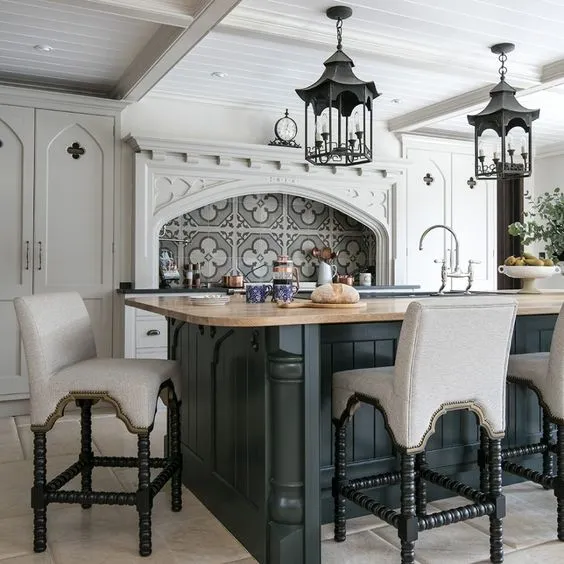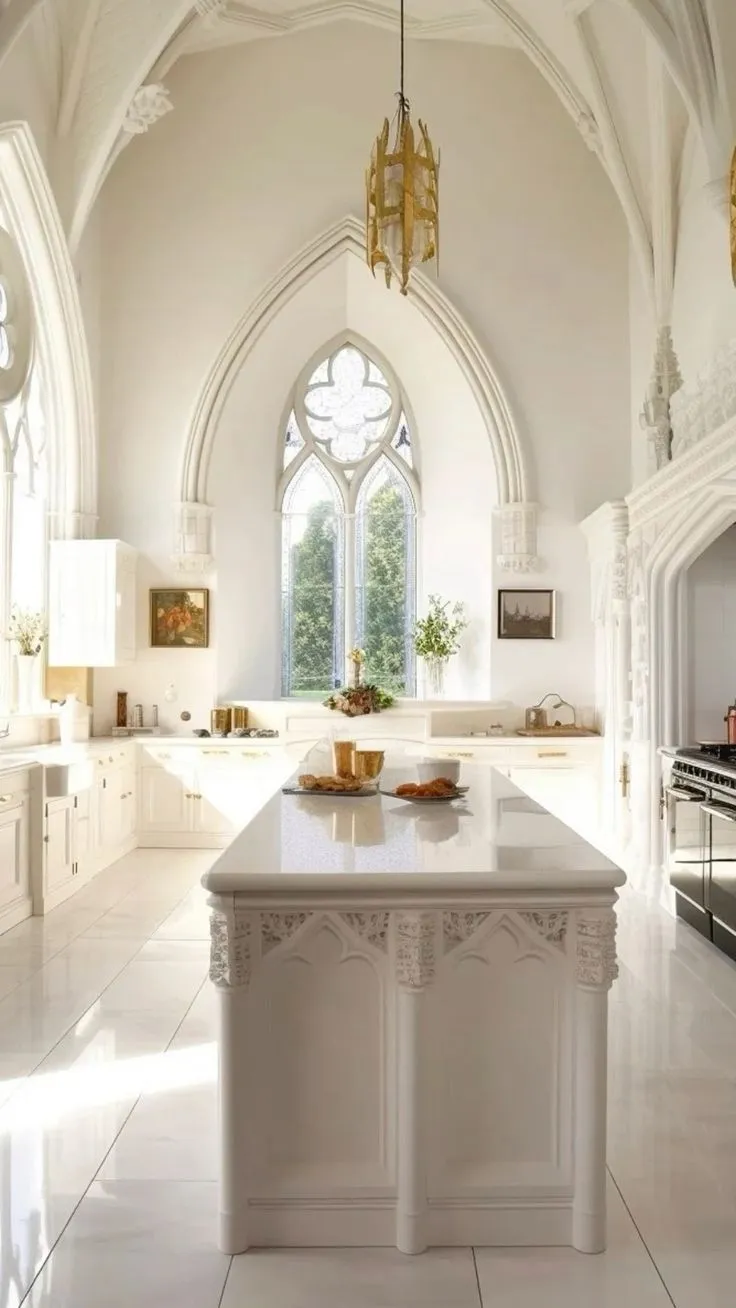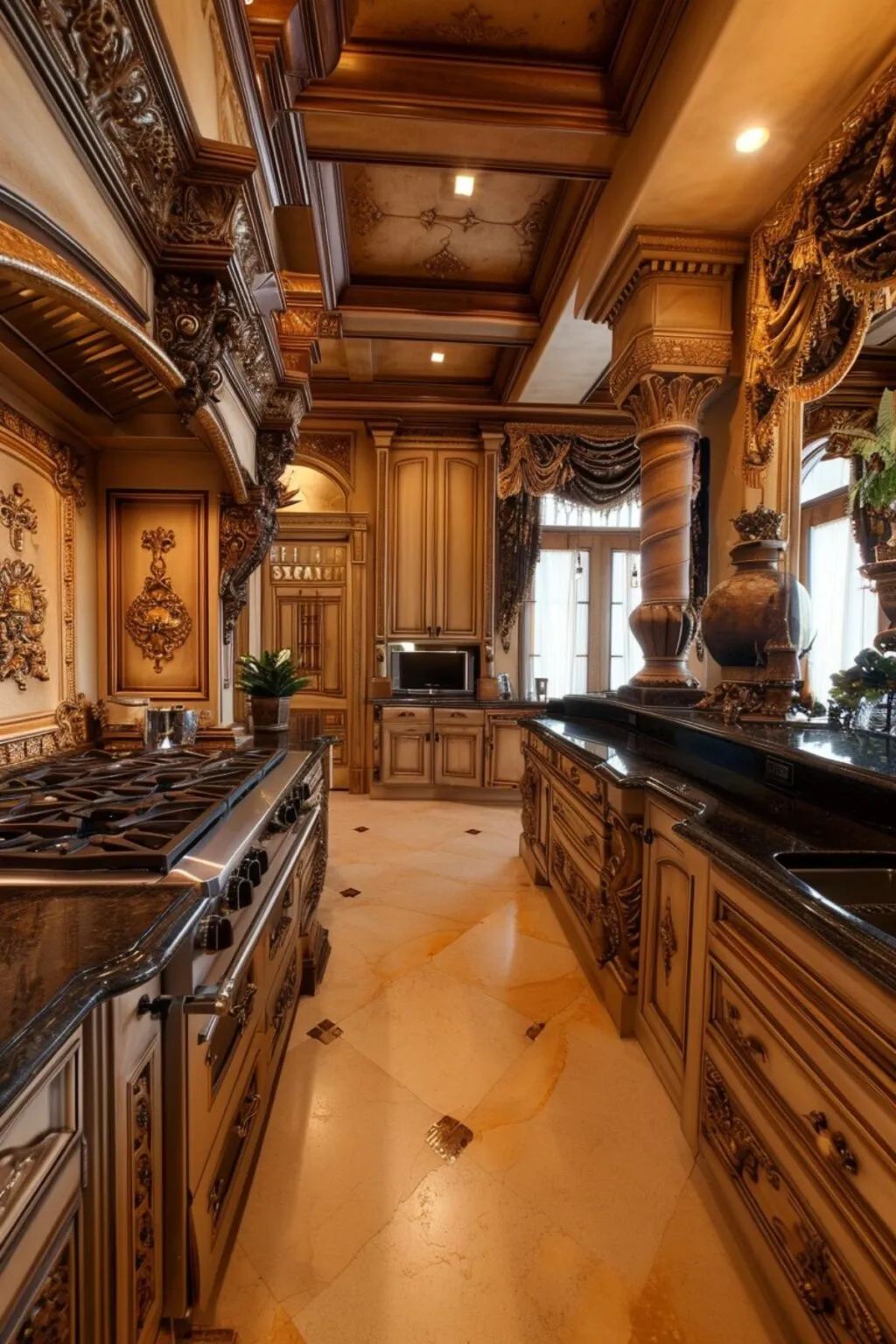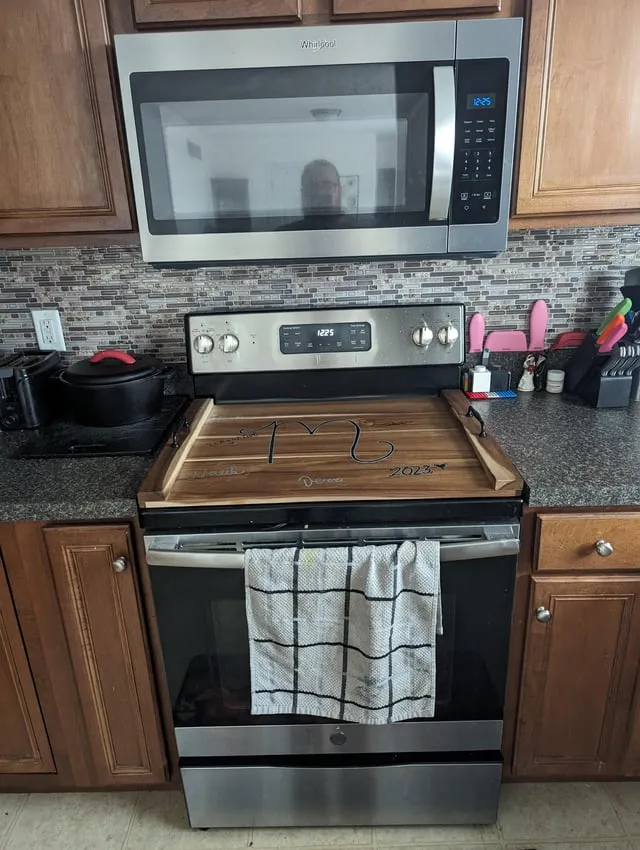What Defines Gothic Kitchen Decor?
Gothic kitchen decor transcends mere aesthetics; it’s a bold statement, a celebration of the dramatic, and a nod to history. It’s about embracing the shadows, finding beauty in the ornate, and creating a space that feels both luxurious and mysterious. Think of the grand cathedrals and castles of the Gothic era, and translate that essence into your kitchen. This style often incorporates dark color palettes, detailed craftsmanship, and elements that evoke a sense of grandeur and timelessness. It’s not just about the things you put in your kitchen; it’s about creating an atmosphere, a feeling, and an experience. This style allows you to showcase your personality and creativity while adding depth and complexity to your home. This blog post explores the core elements and the essential must-haves to transform your kitchen into a stunning Gothic retreat.
Key Elements of Gothic Kitchen Design
Before diving into the must-haves, let’s understand the core design principles. Gothic kitchens typically feature a rich tapestry of textures and materials. Dark woods, like mahogany or walnut, are often the foundation, complemented by stone, metal accents, and intricate detailing. Architectural elements such as arched doorways and windows add to the drama. The goal is to create a sense of depth and visual interest. Furthermore, Gothic design celebrates intricate patterns and bold silhouettes. Keep in mind that achieving the gothic look is about carefully selecting elements that resonate with the overall aesthetic. When done right, the result is a kitchen that is both visually striking and undeniably inviting. By understanding these foundational principles, you can avoid common pitfalls and confidently create a space that embodies the essence of gothic design.
Ornate Dark Furniture

Dark, imposing furniture is a hallmark of Gothic design. Consider investing in pieces crafted from dark woods such as mahogany or ebony, with intricate carvings or details. A large, imposing dining table with high-backed chairs becomes the focal point, setting the stage for gatherings. A kitchen island with ornate legs or a dark-stained hutch can add additional storage and visual interest. Prioritize quality and craftsmanship; these pieces should evoke a sense of history and tradition. Furthermore, the furniture should be selected to complement the overall space and add to the intended mood. Remember that the furniture should reflect the style while remaining functional. Be sure to consider storage capacity and the overall workflow in the kitchen when choosing furniture. It is also important to find items that are within your budget.
Elaborate Lighting Fixtures
Lighting is critical to setting the mood in a Gothic kitchen. Choose elaborate fixtures that make a statement. Chandeliers with wrought iron details or candelabra-style lighting fixtures add drama and romance. Consider pendant lights with dark metal finishes or intricate glass shades above the kitchen island or dining area. Use a combination of ambient, task, and accent lighting to create depth and highlight key features. Dimmers are essential, allowing you to adjust the atmosphere from bright and functional to dim and mysterious. The right lighting fixtures can completely transform the space. Make sure the lighting choices align with the rest of the kitchen’s features. The lighting should be functional while adding to the ambiance of the gothic style. The fixtures should be chosen based on their durability and their efficiency. Remember to think about the long-term usage and the type of lighting you prefer.
Gothic-Inspired Accessories
Accessories are the key to completing the Gothic look. Incorporate items that reflect the historical period, such as ornate candlesticks, antique-looking mirrors, and wrought iron accents. Think about adding decorative plates with gothic patterns, antique silver serving dishes, or even a vintage tea set. Look for items that have unique textures and visual appeal. Place these items strategically around the kitchen to enhance the gothic atmosphere. A few well-chosen pieces can make a big difference, creating a sense of depth and personality. Consider the colors and materials when choosing accessories to make sure they harmonize with the rest of the space. Select pieces that are not just decorative, but also have a function, such as a beautiful wine rack or elegant spice jars. These accessories should also reflect your personal tastes and preferences.
Color Palette: Deep and Dramatic

The color palette is pivotal in gothic kitchen design. Embrace deep, rich hues like black, deep reds, and dark blues. These colors create an intimate and dramatic setting. When selecting paint colors, consider the natural light available in your kitchen. If you have plenty of natural light, you can confidently use darker shades. If your kitchen lacks natural light, consider using these colors as accents, paired with lighter shades such as grey or cream on the walls to balance the look. Dark colors absorb light, so be sure to plan for adequate lighting, using a mix of ambient, task, and accent lighting. Use these colors judiciously, balancing them with lighter elements to avoid a space that feels too heavy or closed in. Choose colors that complement the furniture and other elements of your design. The color scheme must convey the gothic style while still being functional.
Black or Dark-Stained Cabinets
Black or dark-stained cabinets are a must-have. They set the tone for the entire space, creating a dramatic backdrop. Consider options like ebony, mahogany, or even deep charcoal grey for a luxurious look. The finish of the cabinets is important; matte finishes are trending and complement the Gothic style well. If you’re not ready to commit to a full cabinet overhaul, consider painting your existing cabinets or using a dark stain. Dark cabinets also help to hide imperfections and create a clean, polished look. Choosing the right hardware for your cabinets, such as wrought iron pulls or antique-style knobs, can further enhance the gothic aesthetic. Keep in mind that dark cabinets require careful planning and execution to make sure they fit in with the rest of the space. The cabinets must be durable and easy to clean as well.
Rich, Textured Walls
The walls can be used to add texture and drama to your Gothic kitchen. Consider textured wallpapers with gothic patterns, such as damask or fleur-de-lis designs. Stone or brick accents can also add visual interest. Alternatively, you could choose a darker paint color and add wainscoting or molding to create depth. If you want to keep things simple, consider a dark paint color with a matte finish. Remember that wall treatments are a great way to enhance the overall look and feel. To enhance the aesthetic, you can add details like artwork or mirrors. If you choose wallpaper, be sure to select a pattern that aligns with the overall Gothic theme. The wall texture and treatment must be durable and able to withstand the wear and tear of a busy kitchen. Make sure that the wall complements the rest of your design.
How to Balance Gothic with Functionality

While embracing the Gothic aesthetic is exciting, it’s important not to sacrifice functionality. Ensure your kitchen layout is practical, with ample counter space and efficient workflow. Use high-quality materials and finishes that are durable and easy to maintain. Integrate modern appliances to provide functionality while maintaining the Gothic style. Consider adding a touch of modernity to balance the design. Proper lighting is crucial; ensure you have sufficient task lighting for food preparation and ambient lighting for creating a cozy atmosphere. By prioritizing both aesthetics and functionality, you’ll create a Gothic kitchen that is both beautiful and practical, a space you’ll love to spend time in. By following these tips, you can make sure that your kitchen is both stylish and practical.
